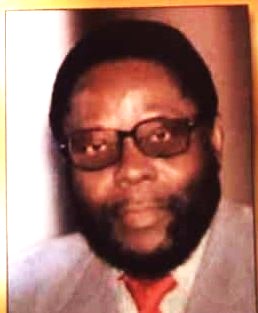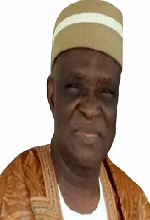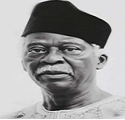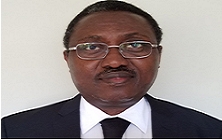
Professor SADIK, Omowunmi, NNOM
Science
| Name : | Professor SADIK, Omowunmi, NNOM |
|---|---|
| Award Year : | 2016 |
| Conferred by : | President Muhammadu Buhari, GCFR |
Omowunmi "Wunmi" A. Sadik was born in 1964 in Lagos, Nigeria. Her family included a number of scientists, who supported her interests in physics, chemistry, and biology. She received her bachelor's degree in chemistry from the University of Lagos in 1985, and went on to receive her master's degree in chemistry in 1987. Sadik then attended Wollongong University in Australia. In 1994, she received her Ph.D. degree in chemistry from Wollongong.
Career
is a Nigerian professor, chemist, and inventor working at the Binghamton University. She has developed microelectrode biosensors for detection of drugs and explosives and is working on the development of technologies for recycling metal ions from waste, for use in environmental and industrial applications. In 2012, Sadik co-founded the non-profit Sustainable Nanotechnology Organization.
A postdoctoral fellowship from the National Research Council supported her as a researcher at the U.S. Environmental Protection Agency from 1994 to 1996. She then accepted a position as an assistant professor of chemistry at the Binghamton University in Binghamton, New York. She was promoted to associate professor in 2002, and full professor in 2005. At that time, she also became director of the Center for Advanced Sensors & Environmental Systems (CASE) at Binghamton. She has been visiting faculty at the Naval Research Laboratories, Cornell University, and Harvard University.
Sadik studies surface chemistry, with particular emphasis on the development of biosensors for use in environmental chemistry. She has found that conducting polymers are especially promising for use in sensing applications She has developed microelectrode biosensors sensitive to trace amounts of organic materials. technology which can be used for drug and bomb detection. She is also studying detoxification mechanisms of wastes such as organochlorine compounds in the environment, with the purpose of developing technologies for recycling metal ions from industrial and environmental waste. In one project, microbial enzymes increased the conversion of highly toxic chromium (VI) to non-toxic chromium (III) from 40% to 98% Sadik is credited with more than 135 peer-reviewed research papers and patent applications. She holds U.S. patents on particular types of biosensors. In 2011, she was the chair of the inaugural Gordon Conference on Environmental Nanotechnology. In 2012, Sadik and Barbara Karn co-founded the Sustainable Nanotechnology Organization, a non-profit, international professional society for the responsible use of nanotechnology worldwide. ]Sadik is an elected fellow of the Royal Society of Chemistry (2010) and of the American Institute for Medical and Biological Engineering (elected 2012). She is also a member of the American Chemical Society. She is involved with the Environmental Protection Agency and the National Science Foundation, and was part of the National Institutes of Health Study Panel on Instrumentation and Systems Development. She is involved in international collaborations with the UNESCO International Center of Biodynamics in Bucharest, Romania, Ege University in Turkey, and the University of Fukui in Japan.[
Research Interests:
A core objective of my research program is to understand the mechanisms of how chemical information is transformed from one interface to another, and to use that knowledge to develop innovative sensing technologies, functional materials and devices. We are conducting groundbreaking research in biosensors towards the development of new diagnostic tools and detection devices for various medical, environmental and food applications.
My group and I have authored or co-authored over 160 scientific publications and I have given over 350 invited lectures and conference contributions world-wide. Some of my publications have appeared in very reputable scientific journals such as ACS Nano, RSC Advances, Langmuir, ACS Catalysis, Chemical Communications and Biosensors & Bioelectronics. We have 5 US patents and have successfully translated basic research in biosensors into the design and fabrication of a prototype portable, fully autonomous, and remotely operated sensing device known as U-PAC™ (Ultra-Sensitive Portable Capillary Sensor). My laboratory has discovered a new class of nanostructured, p-conjugated, poly (amic) acid - PAA. The uniqueness of PAA lies in its excellent chromatic, electronic, biodegradable and mechanical properties. We have focused on continued efforts ultimately aimed at small molecule-driven molecular design and preparation of sustainable nanomaterials with precise tuning of electrochromatic properties on demand. The materials provide superior properties which can meet the requirements of society’s expectations for a safer environment and sustainable future.
The concept of sustainable nanotechnology involves the nanoscale control of synthesis and processing of matter without footprints that give rise to environmental degradation. Hence there is a search for synthetic methods that utilize fewer amounts of materials, water, and energy; while reducing or replacing the need for organic solvents. Our group has developed anisotropic nanoparticles using water soluble, naturally-derived flavonoids. One example is Quercetin Pentaphosphate which we have used as reducing agents and stabilizers. Our approach was achieved at room temperature using water as a solvent and it requires no capping agents. The resulting nanoparticles were spherical, triangular, cubicle, hexagonal and rectangular in shape. They also showed excellent antibacterial activities of 99.9%, 100% and 99.9% growth inhibition for Escherichia coli ATCC® 25922™, Staphylococcus epidermidis ATCC® 12228™ and Citrobacter freundii ATCC® 8090 at 104 cfu inoculations.

Prof. CHIDUME., Ejike Charles, LATE,, NNOM
Science

Prof OLUTOYE, Olurotimi Oluyinka, NNOM
Medicine

Prof EKHAGUERE, O. Samuel Godwin, NNOM
Science

Prof. OLUFEMI, OBAFEMI, NNOM
Humanities, arts and culture

Mr ONOBRAKPEYA, Paul Bruce, NNOM
Humanities, arts and culture

Prof. ADESINA, Adesoji, NNOM
Engineering/technology

Professor SADIK, Omowunmi, NNOM
Science

Professor OJAIDE, Tanure, NNOM
Humanities